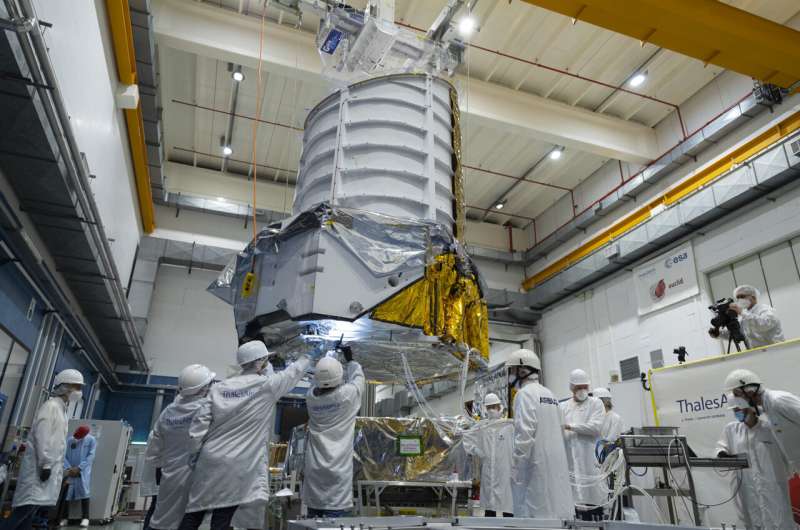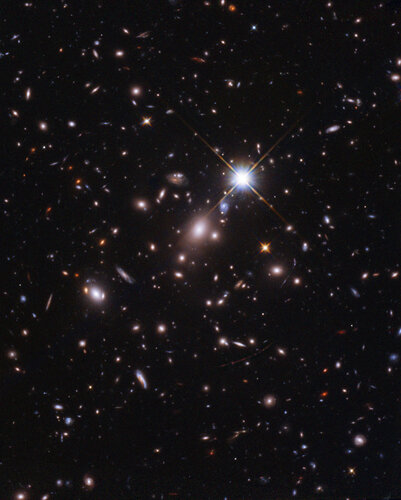
Copernical Team
Winning technologies benefit NASA and Industry
 In 2021, NASA recognized four teams from around the agency for inventions and software that will help government and private industry. The new technologies can help improve passenger flights and remotely piloted vehicles, enhance data on our home planet, and help send spacecraft and astronauts to the Moon and beyond.
"Whether creating new space technologies that help wildfire fighters or s
In 2021, NASA recognized four teams from around the agency for inventions and software that will help government and private industry. The new technologies can help improve passenger flights and remotely piloted vehicles, enhance data on our home planet, and help send spacecraft and astronauts to the Moon and beyond.
"Whether creating new space technologies that help wildfire fighters or s Sierra Space to revolutionize space exploration with Siemens' Xcelerator
 Siemens Digital Industries Software has announced that Sierra Space, a leading commercial space company at the forefront of creating and building the future of space transportation and infrastructure for Low Earth orbit (LEO) commercialization, has implemented Siemens' Xcelerator portfolio of software and services as the foundation of its next-generation digital engineering program.
The co
Siemens Digital Industries Software has announced that Sierra Space, a leading commercial space company at the forefront of creating and building the future of space transportation and infrastructure for Low Earth orbit (LEO) commercialization, has implemented Siemens' Xcelerator portfolio of software and services as the foundation of its next-generation digital engineering program.
The co Singapore signs Artemis Accords; Artemis I is 'Go' for Wet Dress Rehearsal
 Singapore demonstrated its commitment to the peaceful and responsible exploration of space by signing the Artemis Accords, which set forth the guiding principles for cooperation among nations participating in NASA's Artemis program. Minister for Trade and Industry Gan Kim Yong signed the document during a ceremony March 28, 2022, in Washington.
Singapore is the 18th country to sign the Art
Singapore demonstrated its commitment to the peaceful and responsible exploration of space by signing the Artemis Accords, which set forth the guiding principles for cooperation among nations participating in NASA's Artemis program. Minister for Trade and Industry Gan Kim Yong signed the document during a ceremony March 28, 2022, in Washington.
Singapore is the 18th country to sign the Art NASA's next moon rocket set for wet dress rehearsal ahead of launch
 Having rolled the Space Launch System lunar rocket out to its launch pad and powered it up successfully, NASA engineers and technicians say they're just about ready for a prelaunch wet dress rehearsal this week.
During the prelaunch test, which is scheduled to kick off Friday, the rocket and team will run through launch day procedures from fueling to just before startup, without actuall
Having rolled the Space Launch System lunar rocket out to its launch pad and powered it up successfully, NASA engineers and technicians say they're just about ready for a prelaunch wet dress rehearsal this week.
During the prelaunch test, which is scheduled to kick off Friday, the rocket and team will run through launch day procedures from fueling to just before startup, without actuall US astronaut and two cosmonauts return from ISS in Russian Soyuz capsule
 After extending the record for the longest single spaceflight in history by an American to 355 days, NASA astronaut Mark Vande Hei returned to Earth on Wednesday, March 30, along with Roscosmos cosmonauts Anton Shkaplerov and Pyotr Dubrov.
The trio departed the International Space Station at 3:21 a.m. EDT and made a safe, parachute-assisted landing at 7:28 a.m. (5:28 p.m. Kazakhstan time)
After extending the record for the longest single spaceflight in history by an American to 355 days, NASA astronaut Mark Vande Hei returned to Earth on Wednesday, March 30, along with Roscosmos cosmonauts Anton Shkaplerov and Pyotr Dubrov.
The trio departed the International Space Station at 3:21 a.m. EDT and made a safe, parachute-assisted landing at 7:28 a.m. (5:28 p.m. Kazakhstan time) US astronaut ends record spaceflight with Russian ride home

A NASA astronaut caught a Russian ride back to Earth on Wednesday after a U.S. record 355 days at the International Space Station, returning with two cosmonauts to a world torn apart by war.
Mark Vande Hei landed in a Soyuz capsule in Kazakhstan alongside the Russian Space Agency's Anton Shkaplerov and Pyotr Dubrov, who also spent the past year in space.
Extreme precision needed to attach two main parts of Euclid spacecraft together

On 24 March, over a dozen engineers gathered at Euclid industrial prime contractor, Thales Alenia Space in Turin, to carefully attach the two main parts of the Euclid spacecraft together.
US astronaut ends record-long spaceflight in Russian capsule (Update)

A NASA astronaut caught a Russian ride back to Earth on Wednesday after a U.S. record 355 days at the International Space Station, returning with two cosmonauts to a world torn apart by war.
Mark Vande Hei landed in a Soyuz capsule in Kazakhstan alongside the Russian Space Agency's Anton Shkaplerov and Pyotr Dubrov, who also spent the past year in space.
Journey to Destination Earth begins

Today, the European Commission, ESA, the European Centre for Medium-Range Weather Forecasts (ECMWF) and the European Organisation for the Exploitation of Meteorological Satellites (Eumetsat) celebrated the official launch of the Destination Earth initiative: an ambitious project that involves creating a digital replica of Earth to help us move towards a sustainable future.
A record broken: Hubble finds the most distant star ever seen
 Image:
A record broken: Hubble finds the most distant star ever seen
Image:
A record broken: Hubble finds the most distant star ever seen 